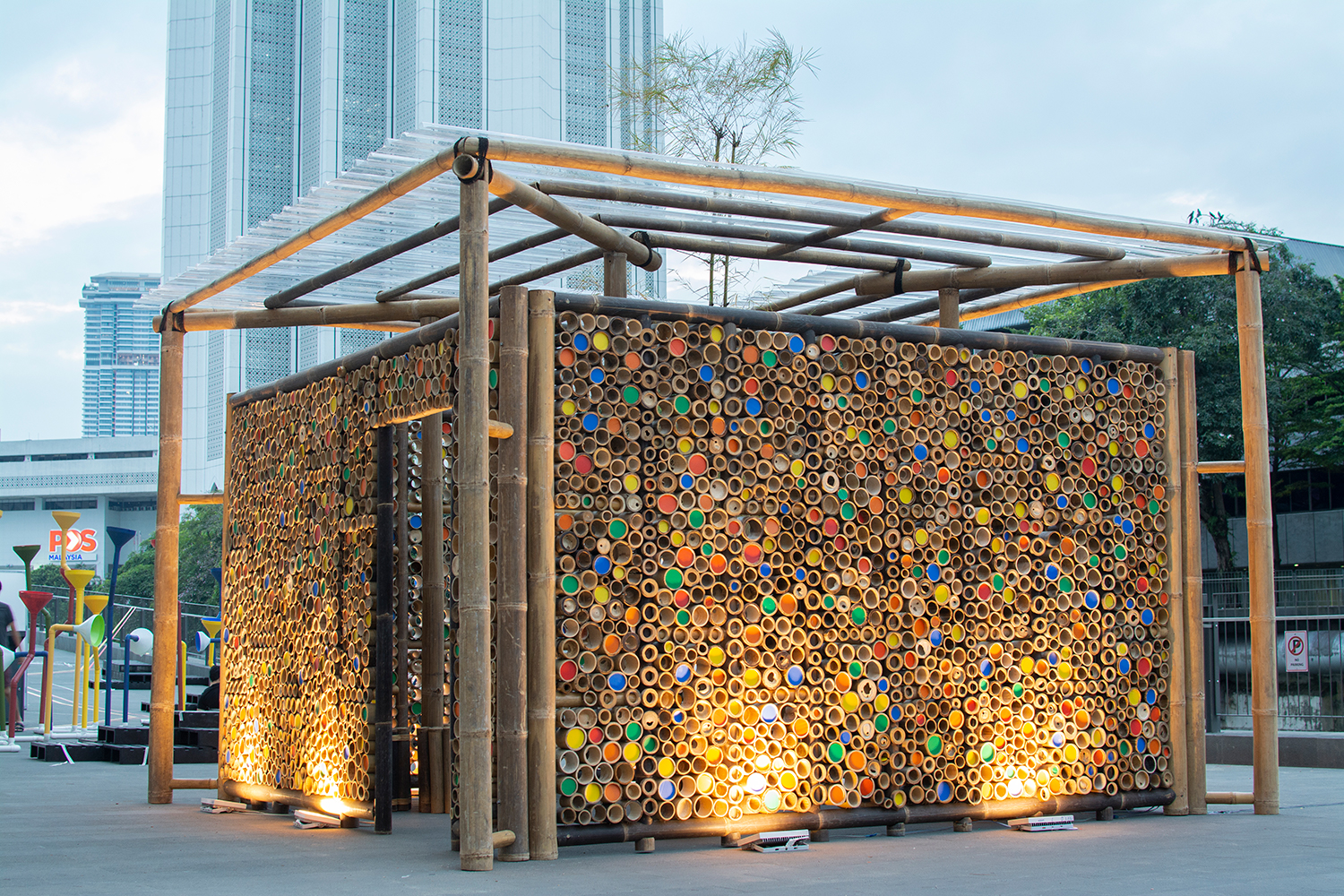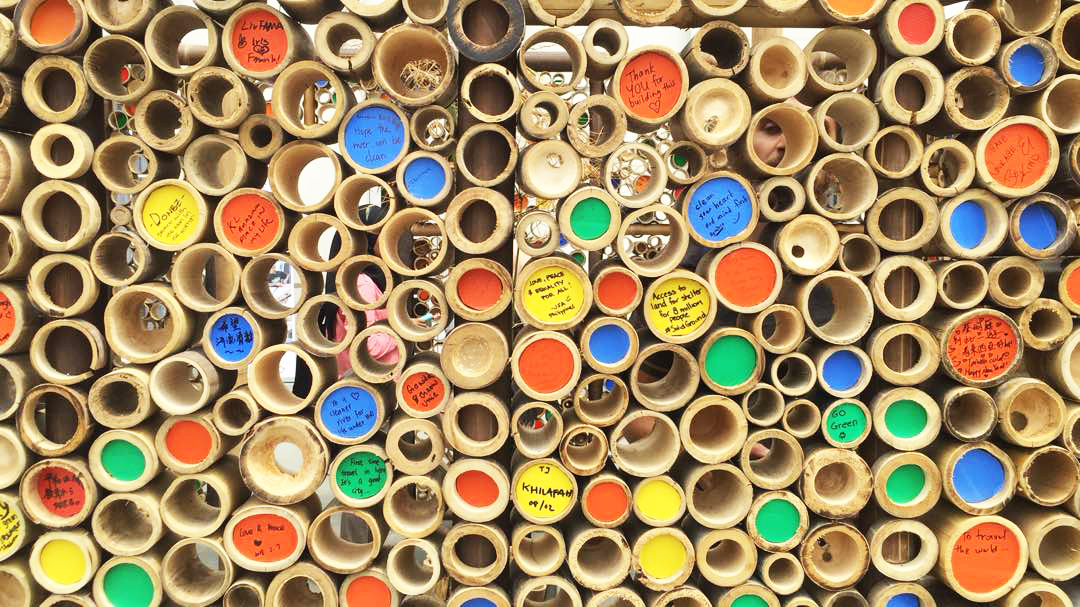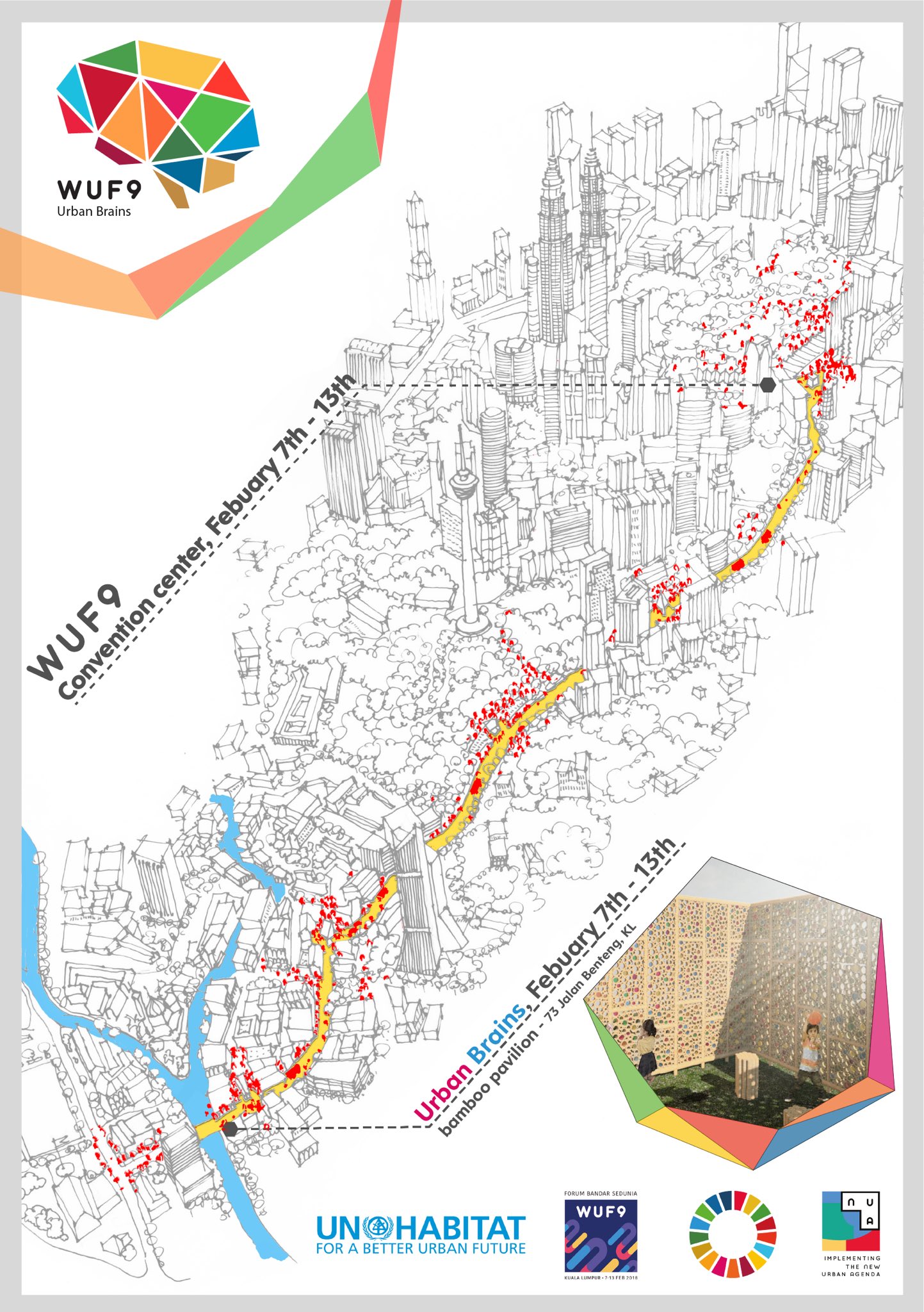




Media Coverage
︎︎︎ “Pavilion in Malaysia is a colorful take on bamboo” by Designboom
︎︎︎ “Colorful bamboo pavilion champions sustainable design in Kuala Lumpur” by Lucy Wang (InHabitat)
︎︎︎ “Temporary Pavilion in Malaysia Aims to Raise Awareness of Bamboo as a Construction Material” by ArchDaily
︎︎︎ “Pavilion in Malaysia is a colorful take on bamboo” by Designboom
︎︎︎ “Colorful bamboo pavilion champions sustainable design in Kuala Lumpur” by Lucy Wang (InHabitat)
︎︎︎ “Temporary Pavilion in Malaysia Aims to Raise Awareness of Bamboo as a Construction Material” by ArchDaily
The Urban Brain Bamboo Pavilion
Cities, as major contributors to CO2 emissions, necessitate urgent architectural transformations towards sustainability, including the utilization of locally sourced materials.
"The Urban Brain Bamboo Pavilion" is a public space installation conceived and implemented for the ninth edition of the World Urban Forum (WUF), held in Kuala Lumpur (Malaysia). The WUF is among the largest urban planning and city governance conferences attracting more than 20,000 participants. The conference is organized by UN-Habitat every two years in collaboration with a host country. On the occasion of WUF9, UN-Habitat launched an internal competition to fund a series of off-conference-venue activities to connect the theme of the WUF9 (“Cities for All”) with local communities. The winning proposal (video) submitted by a team of UN-Habitat employees led by Carmelo Ignaccolo and Anastasia Ignatova was titled “39-min to an Eco-Urban Future” and is intended to disseminate outdoor events along a walk connecting the conference venue (KLCC) to Medan Pasar, riverfront. The nodal part of this walk was the “Urban Brain Bamboo Pavilion.”
The pavilion has a simple square plan consisting of four walls and exterior pillars which connect
the wall to the roof. The walls are made of an intricate pattern of bamboo rings, containing the colors of the United Nations Sustainable Development Goals (SDGs) and, thus, generating a pointillist effect. Custom-designed stools made from short bamboo poles tied together with rattan were placed inside the pavilion in a square courtyard-like space. Locals, visitors, and World Urban Forum attendees engaged with the pavilion by writing their urban pledges on the colorful bamboo rings, turning the pavilion into an incubator of sustainable urban design ideas.
Exhibition Team
Architecture Design and Construction: Eleena Jamil Architect
Bamboo Workshop: Bamboo Jungle Adventures